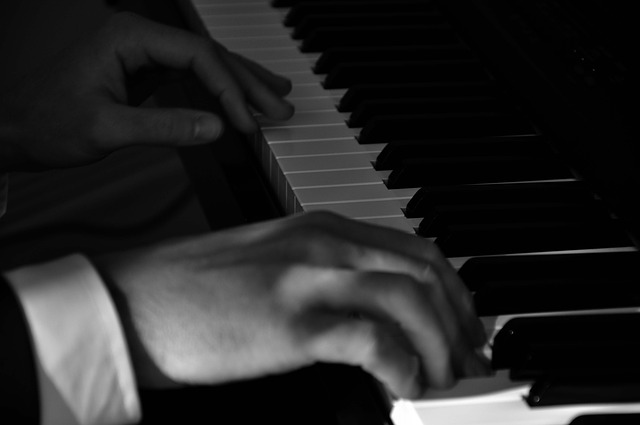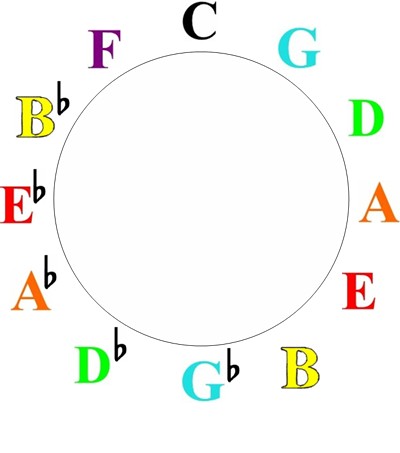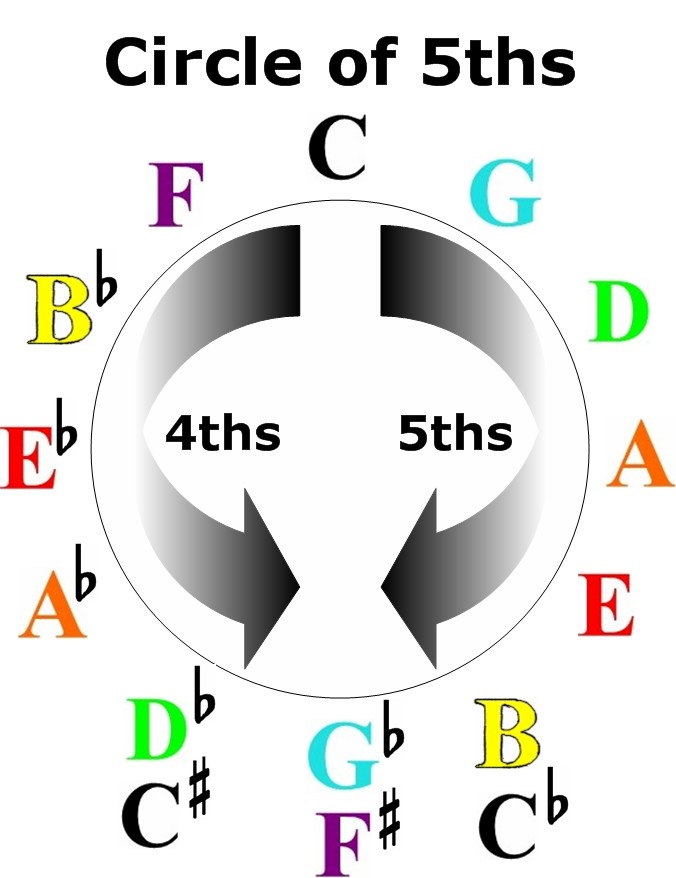 You'll often find a two chord sequence that fits together like a puzzle. One such sequence is the Major 9 to minor 9 chord progression. These two types of chords seamlessly progress through a song and have a pleasing sound.
You'll often find a two chord sequence that fits together like a puzzle. One such sequence is the Major 9 to minor 9 chord progression. These two types of chords seamlessly progress through a song and have a pleasing sound.
These chords produce the type of sound that you find in jazz standards and other songs that have a contemporary format. If you've ever been to a cocktail lounge, you'll be familiar with this type of music.
I want to share with you an easy way to progress though these two types of chords.
First of all, both of these chords are Major & minor at their most basic level.
Here we have C Major And C minor
And C minor Before we look this Major 9 to minor 9 progression, I want to show you how the structure of this progression works by using the circle of 5ths.
Before we look this Major 9 to minor 9 progression, I want to show you how the structure of this progression works by using the circle of 5ths.
As you may know, the circle of 5ths is a geometrical representation of musical elements such as keys of music as well as chord progressions. The circle of 5ths is so aptly named because it represents intervals of 5ths if you move clockwise. But it could, and sometimes is referred to as the circle of 4ths if you move counter-clockwise around the circle.
The circle of 5ths is so aptly named because it represents intervals of 5ths if you move clockwise. But it could, and sometimes is referred to as the circle of 4ths if you move counter-clockwise around the circle.
It's in this direction (4ths), that chords tend to want to progress. So we'll start with our Major 9 to minor 9 progression at the top of the circle with C Major.
C Major 9
 The easiest way to think of this extended chord is to simply divide it into two parts. In your left hand, you have the root of the chord (C). In your right, you have the 3rd, 5th, Major 7th and 9th. You could look at these tones in the right hand as being a part of the C Major 9 chord, or you could use a mental shortcut to think of them as a chord independent of the root. This is really a concept that is referred to as an "upper structure" chord. This makes it easier to voice chords as you cycle through this progression.
The easiest way to think of this extended chord is to simply divide it into two parts. In your left hand, you have the root of the chord (C). In your right, you have the 3rd, 5th, Major 7th and 9th. You could look at these tones in the right hand as being a part of the C Major 9 chord, or you could use a mental shortcut to think of them as a chord independent of the root. This is really a concept that is referred to as an "upper structure" chord. This makes it easier to voice chords as you cycle through this progression.
Looking at C Major 9 again, the right hand (independent of the root), is an E minor 7 chord. So in essence, you're playing E minor 7 over C which creates C Major 9.
The easiest formula to use is to play the root of the chord with your left hand. Find the major 3rd in your right hand and play a minor 7 chord based upon it. Now let's move onto our minor 9 chord.
Now let's move onto our minor 9 chord. You can also think of this extended chord in two parts. You have the root (C) in your left hand just as before. In the right hand is the minor 3rd, 5th, flat 7, and 9th. If you think of the right hand as an independent chord, you have an E flat Major 7 chord.
You can also think of this extended chord in two parts. You have the root (C) in your left hand just as before. In the right hand is the minor 3rd, 5th, flat 7, and 9th. If you think of the right hand as an independent chord, you have an E flat Major 7 chord.
Now for the fun part...
The circle of 5ths is a tool to build our progression upon. Since we've already cycled through C, let's move on to F.
Our next chord is F Major 9. Let's use the mental shortcut to create this chord also.
You have F as the root in your left hand. In your right hand, you're going to find the 3rd of F Major which is A. Build an A minor 7 chord. You now have F major 9. Now we're moving on to F minor 9. Again, play the root in your left hand. In your right hand, find the minor 3rd of F minor which is A flat. Build an A flat Major 7 chord. You now have F minor 9.
Now we're moving on to F minor 9. Again, play the root in your left hand. In your right hand, find the minor 3rd of F minor which is A flat. Build an A flat Major 7 chord. You now have F minor 9. You can use this formula all throughout the circle of 5ths until you cycle back around to C again. Not only is this a fun movement on the keys, it also sounds really good.
You can use this formula all throughout the circle of 5ths until you cycle back around to C again. Not only is this a fun movement on the keys, it also sounds really good.
Now let's take a look at one aspect that will aid in making this Major 9 to minor 9 chord cycle sound even better.
As you may have noticed, both of these chords are being played with the same voicings respectively.

If these chords were being played in the context of a piece of music, it wouldn't be the best idea to play each chord type with the same voicings consistently.
This is where inversions come in. Chord inversions are simply the arrangement of the notes.
If you take the right hand of our C Major 7 chord (again it has the appearance of E minor 7), you can play it in any inversion such as:

Not only does inverting the chord give the progression a refreshing variation in sound, it also allows for a smooth transition to the next chord.

Let's use the C minor 9 chord as example to transition from. Here, we could voice the F Major 7 chord as before, but the smoothest transition from the C minor 9 to F Major 7 would be to voice it this way. By doing so, the tones in the right hand have a minimum distance to move. This is also known as good 'voice leading".
Here, we could voice the F Major 7 chord as before, but the smoothest transition from the C minor 9 to F Major 7 would be to voice it this way. By doing so, the tones in the right hand have a minimum distance to move. This is also known as good 'voice leading". 
You can still use the mental shortcut. The only difference is, you're playing an inversion of the upper structure chord. This is one of those very good examples that shows the value of learning chord inversions. Chord inversions are much easier to learn to play than most beginning piano players think. This is because they become easier with each new chord inversion learned.
I hope you have fun playing this Major 9 to minor 9 chord cycle and be aware that it could be interjected at any length into any piece of music that feel it's appropriate. Experiment and have fun.
Until Next time, Go Play.
Greg Lee
Latest posts by Greg Lee (see all)
- What is a minor/Major 7 Chord? - October 26, 2023
- 7 Chord Substitutions that Professionals Use - October 19, 2023
- 5 Simple Chord Tricks to Sound Amazing - October 5, 2023



